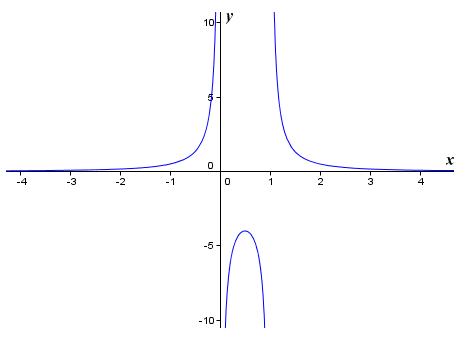| Author: | |
| Website: | |
| Page title: | |
| URL: | |
| Published: | |
| Last revised: | |
| Accessed: |
Many of the non-linear functions we encounter are continuous. This simply means that the graph of the function is a smooth curve, with no gaps or sudden breaks. This in turn means that we can differentiate the function for all values of x. Another way of saying this is that, if we were to draw the graph of the function by hand, we would not have to lift the pencil off the paper at any point. There will be occasions, however, when we need to deal with functions that are not continuous. If a function is discontinuous at some value (or values) of x, then we cannot differentiate the function at those points. Consider the following function:
| ƒ(x) = | 1 |
| x 2 - x |
Here is the graph of the function:

The graph of the discontinuous non-linear function ƒ(x) = 1/(x 2 - x)
The function ƒ(x) = 1/(x 2 - x) is discontinuous for x = 0 and x = 1, because at both of these points the denominator in the function (x 2 - x) will evaluate to zero. At these points the function does not return a value, and is said to be undefined. Although a function may be discontinuous for one or more values of x, we can still differentiate the function over a continuous interval. A continuous interval is defined using minimum and maximum values of x, between which the function is continuous. In other words, if we draw the graph of the function between these points, it will be a smooth curve, and we can draw it without ever taking our pencil off the paper.